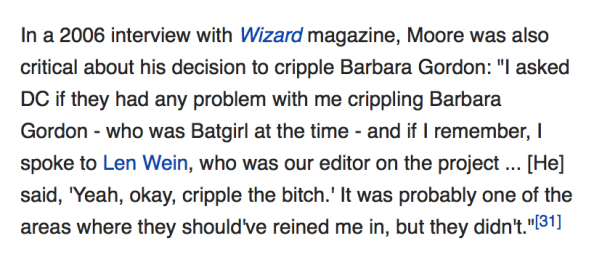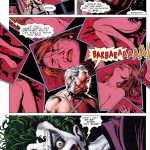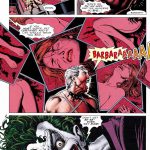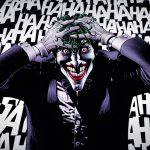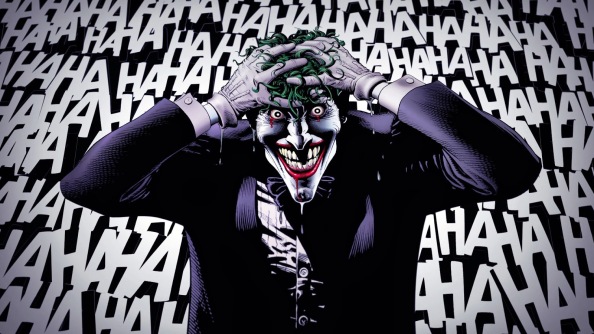When this week started, I didn’t think I’d be writing about the Holocaust. In the current political climate with actual Nazis walking the streets of our country with impunity, it seems to be coming up more and more. Still, I didn’t think when I sat down to watch four of my favorite TV shows do their yearly crossover that I’d be confronting this particular historical nightmare.
I should have realized. I should have been prepared. For weeks now, the CW’s four DC Universe superhero shows – Supergirl, Flash, Arrow, and Legends of Tomorrow – have been advertising their once a year, four-episode crossover. I’d seen the commercials where commandos in uniforms reminiscent of the old SS of yore crashed the wedding of Barry Allen and Iris West, with all their superhero friends in attendance. “I hate Nazis,” said Arrow, Supergirl, and Flash in the commercials, before the epic ass-kicking began. I knew the crossover was going to feature Earth X, an alternate reality where the Nazis won and subjugated the entire world. I just didn’t know how far the show would go, or how much it would affect me.
Hi, I’m Shoshana, and I’m the granddaughter of a survivor of Auschwitz. And this is how Crisis on Earth X gave me an epic anxiety attack.
[[Please note: This article will include spoilers for all four episodes of Crisis on Earth X, as well as have discussions about the Holocaust and its atrocities that may be triggering. Read on with this warning in mind.]]
Anyone who knows me knows I’m a huge comic book fan, so it’s no surprise I’m an avid follower of all four of DC’s CW shows. I’m a firm believer that in an age of grim-dark reinterpretations of superheroes, the DC TV shows have retained the joyous, adventurous flavor of the original comics while still being innovative for a new modern TV audience. It stands as a nuanced set of shows that go from light-hearted and fun (Legends of Tomorrow) to often dark and brooding (Arrow) and even politically conscious and reactive to today’s real-world issues (Supergirl). Flash is the show I turn to on my worst weeks to find a ray of humorous, heartfelt hope, bolstered by the camaraderie of Team Flash and the exuberant performance of Grant Gustin as Barry Allen.
Yet when I heard this year’s massive crossover would handle the Nazi-focused Crisis on Earth X story arch, I was hesitant. For years, Nazis were the ubiquitous punching bags of media, right alongside zombies. Hell, I think people felt more emotional connection and empathy for the undead, who truly had no say in their unfortunate plight. Nazis are a representation of everything corrupt in the world, the choices made by portions of mankind to sink to depravity through fascism, bigotry and disregard for empathy and human life. The cookie-cutter, two-dimensional Nazi became an easy punching bag in comics, movies, and video games, an easy antagonist to point to as the ultimate evil so no consumer would have difficulty with blasting them out of existence. Or punching them in the jaw.

In today’s political climate, however, it seems the sentiment of ‘punch a Nazi’ has become a controversial one for some reason. With the rise of fascist thought in America, the struggle to embrace a ‘live and let live’ mentality has brought some to talk about Nazism as if it was an acceptable philosophy rather than an abhorrent one. Articles like the recent on in the New York Times profiling the everyday Nazi have been steps, inadvertently or otherwise, towards normalizing fascists living in America today. When ‘alt-right’ leader Richard Spencer was decked in the face on live television by a masked anti-fascist activist, beneath the cries of support there was an undercurrent of actual sympathy. Nazis have become, to some part of the population, sympathetic. (By the way, if you’re having a bad day, just watch this gif a few times, it always gives me some joy).

Now I trusted the progressive writer teams of the DC shows to take on the issue of Nazis well. Of every show on television right now, Supergirl has come out as the most reactive to the horrors of the regressive Trump America, going so far as to almost directly referencing issues going on (such as taking up the term “nasty woman” with a stare-into-the-camera defiance I love) and include more inclusive, progressive storylines with gusto. I wasn’t worried about their handling of the material.
I was worried about me, as a viewer. I was worried it might be too much.
As a little girl, I grew up on stories of the Holocaust. It was almost impossible to miss them in the Orthodox Jewish community where I grew up. Everyone was only one or two steps removed from a Holocaust survivor. They are our neighbors, our family members, people in our synagogues, working in businesses. They are grandparents, just like mine were. My grandmother Nora survived Auschwitz while my grandfather, who died before I was born, survived Treblinka. And in our community, there is a saying: never forget. To us, it isn’t a slogan, but a way of life.
And so from an early age, I heard stories, unimaginable stories, impossibly horrific stories. I saw films. I read books. I went to museums and saw evidence first-hand of the nightmares. I read first-hand accounts. And I met survivors. I talked to my own grandmother and watched her have nightmares. I learned about the twenty or so family members she lost, the life she left behind. She tried to shelter me from the worst of it, but it was impossible to avoid.
I started having nightmares after seeing Holocaust films the first time I saw Schindler’s List. I was staying at a friend’s house and went to bed after the film only to wake up screaming. I had those nightmares after seeing several other movies, and after going to the Yad Vashem Holocaust Museum in Israel. After watching the first episode of The Man In The High Castle I couldn’t sleep properly for three days. Though the show seemed well done, there was no chance I could watch. I avoided ads for it. I grew furious when someone in their promotional department thought decorating an entire New York train car with the Nazi symbols to advertise the show was a good idea. I wasn’t avoiding the issue of the Holocaust. Far from it. The stories lived so far under my skin they’d rooted in and become a haunting I couldn’t shake.
There is an idea when discussing Post Traumatic Stress Disorder called secondary trauma, which is defined as “when an individual is exposed to people who have been traumatized themselves, disturbing descriptions of a traumatic events by a survivor or being exposed to others inflicting cruelty on one another” (Source: Wikipedia). There have been discussions of how the horrors of WWII have continued to pass down their traumas to the next generation and how many people are carrying these secondary traumas into their lives. So it’s no surprise when I mentioned these nightmares to a therapist that she told me this was a form of secondary trauma, one I carried from my family’s history.
And in a way, strangely, I was okay with it. I believe forgetting the past means we can’t help but repeat them, and as our political climate has shown, we’ve got to be vigilant. Sure I’d love to avoid waking up shouting, but it isn’t a consistent problem. I’ve taken my joy at shooting the hell out of Nazis in the last few Wolfenstein games, and love seeing Indiana Jones punch the hell outta Nazis in his movies. But every once in a while, something comes along and pushes the wrong button. And then there’s a tightness in my chest and an anxiety rolling through me I can’t deny.
I sat down to watch Crisis on Earth X and suddenly, I was having a serious problem.
The first two episodes of the crossover, Supergirl and Arrow, went off pretty well. The wedding of Barry and Iris (FINALLY) was something I’d been looking forward to for a while. Seeing all my favorite characters coming together and even talking about their problems (Felicity and Oliver’s relationship drama, Alex’s recent break-up with her girlfriend Maggie Sawyer, and Kara’s loss of her boyfriend Mon-El) were all awesome. Supergirl herself Melissa Benoit flexing her fantastic singing voice during the ceremony scene was a brilliant call-back not only to her time as a Glee star but to the Flash/Supergirl crossover musical episode from earlier this year.
Then, of course, the Nazi’s attacked and it was time for some super-hero ass kicking. And make no mistake. The fight scenes were incredible. The shows really blew out their special effects budget to make every single character have a moment to shine, even taking special time to highlight the non-powered characters using their talents to add to the fights. But as time went on, something started to creep into my skin, especially when the super-powered Nazis showed up. It turned out the general of the Nazi armies, Overgirl, was none other than an alternate world version of Supergirl, and the Fuehrer himself, inherited after Hitler died in 1994 on Earth X, was none other than the doppelganger Oliver Queen himself. Both fought our heroes, emblazoned proudly with the SS emblem on their chests, and that’s when my stomach started to clench. Hearing actors I adored playing evil versions of themselves spouting horrible bigoted, ethnic-cleansing level shit was difficult.
But nothing was as hard as the end of the episode of Arrow and episode 3 of the four-parter, where our heroes were transported to Earth X.

There are images that haunt me from the Holocaust, images people seem intent on resurrecting in every movie and even on memes across the internet. The image of people behind barbed wire, their hair shorn down, skinny and starving and wearing those striped uniforms with those horrifying Stars of David on their chests. And in the episode of Flash, our heroes end up inside one of those very pens alongside emaciated, terrified people. They stand in their super-suits alongside people being held for cleansing in a concentration camp, large as day on my TV screen.
And that’s when I started to panic. My chest got tight. My face got warm. And I really, really wanted to turn off the TV.

The show does nothing to hide the horror of the plight of the prisoners. Jackson (one half of Firestorm from the Legends) asks a prisoner what the pink triangle on his clothing was all for. The prisoner (later discovered to be freedom fighter The Ray) replies, “I loved the wrong person,” intimating the pink triangles marked queer prisoners. Stars, not shown on TV until later in the episode (presumably for effect), indicated Jews. All held together, all in those damned striped uniforms.

I paused the episode three times before I could get through those scenes. As the heroes talked glibly about escaping, the doppelganger of Detective Lance, now a high ranking SS officer, comes in and confronts White Canary, his daughter from another earth. When he asks her why she’s in the camp when she is the epitome of blonde hair/blue eyed perfection, she tells him she is gay. He says he cleansed his own daughter for just the same “deviance” before ordering the heroes taken out, presumably to their deaths.
There are some images like I said. One is the mass graves of Europe, the pits where prisoners were lined up and shot and left for dead by the hundreds. And this doppelganger SS Lance led the heroes to the edge of the same kind of pit and lined them up to face their end. This is about when I had to nope out for a few more minutes once more. Because this was a scene out of my nightmares, and it was happening to characters I loved in a comic book TV show.

I got up. I took a walk around. I drank some water. I wanted to get through this episode. I wanted to see how my favorite heroes would kick the hell out of these Nazis and show them just what fascist mass-murderers got. It was vicarious, it was meant to be, and I wanted to see it to the end. But there was an off-note to me, something not sitting well in my stomach – something besides the obvious secondary trauma.
It was the glibness. When put beside these images of ultimate horror that haunt my dreams, the superheroes I love looked tawdry and disrespectful. They seemed oddly unaffected by the horrors around them, disregarding the human suffering by focusing on their own objective. Few moments showed a real connection to the enormity of the nightmare around them in these scenes. The heroes looked uncomfortable, but their dialogue was removed, the lofty pronunciations of writers trying to gloss through an unbelievably traumatic moment with blase pronouncements of how humanity has harmed one another throughout history in the worst ways.
Even Professor Stein, a character who the writers have gone out of their way to show is Jewish, and Sarah and Alex, both queer characters whose sexuality is prominent in the series, only get moments to address the nightmare of what they’re witnessing. And then they’re off to save the day with grim determination and square-jawed heroics, never once truly interacting with the prisoners around them. In their escape, they leave behind a concentration camp full of people surely soon to be murdered who are used as nothing more than props to make a point.
And there, I discovered, was my problem with the episode and with the intended emotional moments. The Holocaust was used as a prop. It felt cheap. It felt out of sync, out of step, out of place, and not nearly as respectful as it was trying to be.
A single moment made the show all the harder to watch. Heroic Oliver Queen pretends to be the Fuehrer to sneak into the Earth X base and is tested by SS Commander Lance for his identity. They bring out a prisoner: Earth X Felicity Smoak, Oliver’s love on Earth 1 and a known Jewish character. And this, folks, is when I finally had to nope for a while. Because seeing one of my favorites Felicity, in the pajamas with the yellow star of JUDE on her chest, on her knees about to be executed by a Nazi, was too much.

When he called her a “Jewess” I paused to take deep breaths. This was painful. This was triggering. And in my mind, this was over the top. Felicity talks about being taken prisoner for sharing her bread with kids in the camp. “They were starving,” she cries, as the writers ignore the fact that there needs be no excuse for why an SS commander would hold a gun to her head. In reality, she’s a Jew. Nazis needed no excuse to execute Jews. They were missing the point. And they were using a serious trauma to do it.
There were moments of real emotion, real connection. When the rebellion leader, doppelganger of Supergirl’s Wynn, talks about saving his earth, the actor gives a surprisingly emotional performance, hammering home to the heroes who want only to return to save their earth that he must protect and save his earth, where people are dying in the same conflict their grandfather’s fought. And Felicity’s declaration to the Fuehrer on Earth 1 that her grandparents didn’t survive the Holocaust to see their world fall to Nazis was, though short, impactful.
Still, it was during the course of the somewhat convoluted storyline that I discovered problem two with the crossover. Because at the end of the day, we know the heroes would win. That’s how these stories go. They’d go home, they’d defeat the Fuehrer and the General (they did), and they would share a wonderful ending (which I won’t spoil because it is great). But once again, Earth X is put in their rearview mirror, while those background characters would continue to be slaughtered while the resistance fights on. The Ray returns to help, but otherwise, our heroes return to their regularly scheduled broadcast. And I was left with a hitch in my chest, some nightmares on the schedule for that night, and an odd taste in my mouth.
Because punch Nazis all you want, but Holocaust victims and their memories are not props to drive home an agenda. And that’s where this episode went.
In the end, I watched the end of the crossover. I crowed when the heroes kicked the hell out of the Nazis with beautiful special effects style. I loved every second of watching the ending. And frankly, the payoff felt strong despite my issues. The fact that the Nazis are annihilated by a team of diverse heroes including people of color, Jews, and queer heroes was not lost on me, and the show worked hard to nail that home over and over. But by the end of the night I came out feeling shakey, and while others I spoke to seemed excited by how thoughtful and well-done the show had taken Nazis in general, I was left unconvinced. Hell, I was left with the need to work off some anxiety. I stayed up late. I wasn’t really okay.

The message of the Crisis on Earth X crossover is a relevant one and an important one today in our world: Nazis can rise and we must face them no matter the cost. The show does not baulk at the message and instead stands firmly with our heroes united against this unholy threat. But where I’d been concerned about nuance being lost, I found those concerns justified. Did the show need to take the heroes in their lavish costumes to a concentration camp? No. Did they need to put Felicity on her knees and call her Jewess? No. And did they need to leave behind Earth X as an after-thought, left to its perpetual war without regard for closure for the audience? No.
There were, in my eyes, other ways that would have felt more compelling, more complete, and less exploitative. And while I credit the team for trying very, very, hard to get this right, I think they missed the mark by just a little. Or at least it seems that way for me, someone who didn’t sleep well last night.

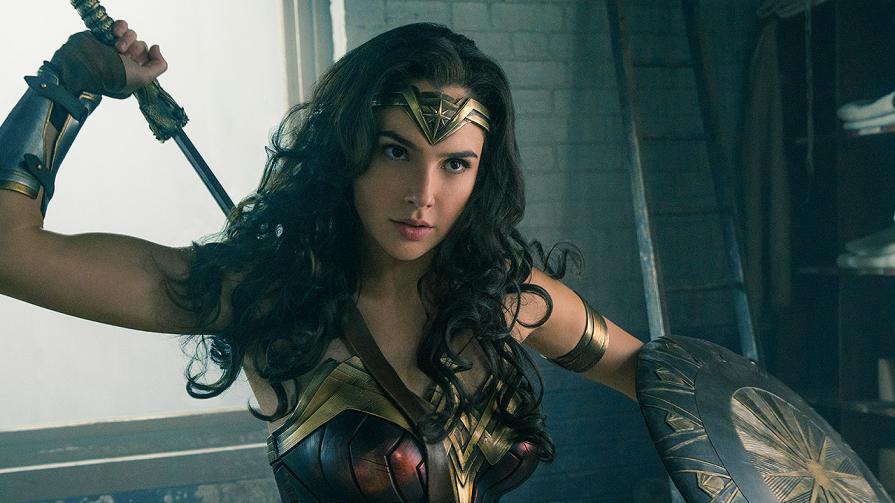

 It’s been years since I was what you’d consider very religious, but the ceremony of lighting Shabbat candles has stayed with me. It’s so important in fact that I chose to write a Larp about it for my contribution to the
It’s been years since I was what you’d consider very religious, but the ceremony of lighting Shabbat candles has stayed with me. It’s so important in fact that I chose to write a Larp about it for my contribution to the 



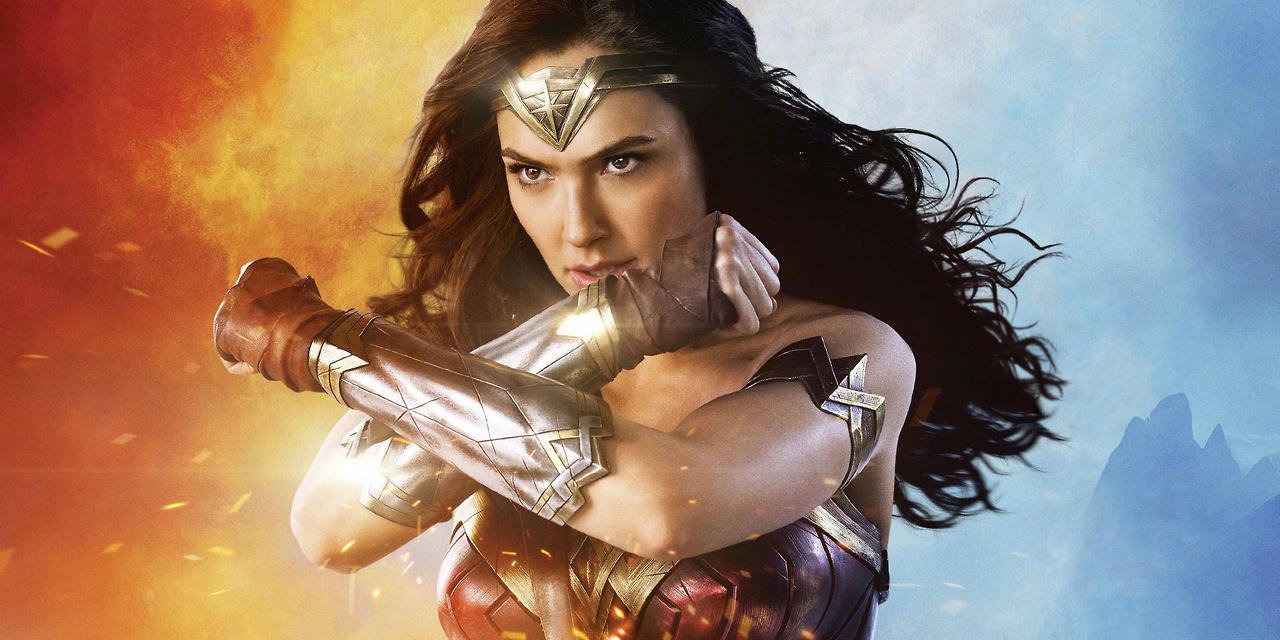



 From the beginning, Wonder Woman truly does its job capturing the origin story of Diana before she picks up the lasso and becomes the warrior who will kick ass in the Justice League. There is nothing more endearing than watching a tiny terror Diana galavanting without fear across the unbearably gorgeous Paradise Island, riding horses and watching the training of the no-holds-barred, thank-you-for-making-them-amazing Amazons. The warriors of Themyscira stride with dignity and grace across the screen, saved from being sexualized and exploited for the male gaze. Instead, the cameras spend time giving them the CGI badass treatment befitting films like 300, as the Amazons show just why they’re exactly the female force to be reckoned with.
From the beginning, Wonder Woman truly does its job capturing the origin story of Diana before she picks up the lasso and becomes the warrior who will kick ass in the Justice League. There is nothing more endearing than watching a tiny terror Diana galavanting without fear across the unbearably gorgeous Paradise Island, riding horses and watching the training of the no-holds-barred, thank-you-for-making-them-amazing Amazons. The warriors of Themyscira stride with dignity and grace across the screen, saved from being sexualized and exploited for the male gaze. Instead, the cameras spend time giving them the CGI badass treatment befitting films like 300, as the Amazons show just why they’re exactly the female force to be reckoned with. For the most part, director Patty Jenkins weaves an incredible heroine’s journey for Princess Diana. Diana and the Amazons discovers war with the arrival of German soldiers on their shores, and with the help of Steve Trevor learn about World War I and the millions dying all across the world. Diana disobeys her mother, steals the lasso of truth and the God Killer sword (one of the most powerful weapons in the DC Universe!) and leaves with Steve to go save the world. She’s naive in thinking she can make everything better just by smiting Ares, who must be behind everything. Here, Gal Gadot plays Diana as the innocent princess, passionately dedicated to her ideals and ready to face down any foe to put her warrior skills to the test. She will save the world no matter what, because she represents the forces of good and right. And of course, she gets a rude awakening.
For the most part, director Patty Jenkins weaves an incredible heroine’s journey for Princess Diana. Diana and the Amazons discovers war with the arrival of German soldiers on their shores, and with the help of Steve Trevor learn about World War I and the millions dying all across the world. Diana disobeys her mother, steals the lasso of truth and the God Killer sword (one of the most powerful weapons in the DC Universe!) and leaves with Steve to go save the world. She’s naive in thinking she can make everything better just by smiting Ares, who must be behind everything. Here, Gal Gadot plays Diana as the innocent princess, passionately dedicated to her ideals and ready to face down any foe to put her warrior skills to the test. She will save the world no matter what, because she represents the forces of good and right. And of course, she gets a rude awakening.

 Diana finally wrestles back some agency during the fantastic trench-battle scene, where she seemingly remembers she doesn’t have to listen to this guy she fished out of the ocean. Instead, she almost single-handedly saves the day after pushing back against the men around her denying she can do what she knows she’s clearly capable of doing. And once Diana starts to move, it’s a joy to watch. Her action sequences are pure poetry, her joy at rescuing innocents in harms way infectious. This is the Diana I came to see, one deciding on her own how to go about saving man’s world from itself.
Diana finally wrestles back some agency during the fantastic trench-battle scene, where she seemingly remembers she doesn’t have to listen to this guy she fished out of the ocean. Instead, she almost single-handedly saves the day after pushing back against the men around her denying she can do what she knows she’s clearly capable of doing. And once Diana starts to move, it’s a joy to watch. Her action sequences are pure poetry, her joy at rescuing innocents in harms way infectious. This is the Diana I came to see, one deciding on her own how to go about saving man’s world from itself.

 These errors are compounded by other issues of representation and missed opportunities in the film. An awkward early scene between Diana and Steve skims almost coyly around the question of Amazonian sexuality (“aww shucks, don’t you know about marriage and sexual pleasure and stuff?”) while ignoring the fact that during the death of a beloved Amazon early in the film, one of her fellow warriors clearly races over in what looks like the grief over her dying lover. That lost moment and odd perhaps erasure of queer inclusion in the film is coupled by some stunning backseating of Doctor Poison as a villain in the film. Touted as a terrifying figure, a murderous chemical genius out to kill for the love of it, Doctor Poison is instead relegated to the German general’s frail sidekick. Her sole moment to shine is in a scene during the castle party when she, wait for it, nearly falls for the undercover charms of Steve Trevor.
These errors are compounded by other issues of representation and missed opportunities in the film. An awkward early scene between Diana and Steve skims almost coyly around the question of Amazonian sexuality (“aww shucks, don’t you know about marriage and sexual pleasure and stuff?”) while ignoring the fact that during the death of a beloved Amazon early in the film, one of her fellow warriors clearly races over in what looks like the grief over her dying lover. That lost moment and odd perhaps erasure of queer inclusion in the film is coupled by some stunning backseating of Doctor Poison as a villain in the film. Touted as a terrifying figure, a murderous chemical genius out to kill for the love of it, Doctor Poison is instead relegated to the German general’s frail sidekick. Her sole moment to shine is in a scene during the castle party when she, wait for it, nearly falls for the undercover charms of Steve Trevor. The film also manages to get some wonderful racial and ethnic stereotyping into the movie with Steve’s three buddies in intrigue, Sameer, Charlie, and Chief. Sameer is played as a lying grifter whose heart really lies in the theater. His “very sorry, master!” acting to Pine’s pretend German general as they try to sneak into the castle is almost painful to watch in its stereotypical awfulness. Meanwhile, Charlie (played by the phenomenal Ewen Bremner) has the chance to be a poignant character as a crack sniper dealing with issues of PTSD. He might have gotten there however if he wasn’t buried in the trope of the Drunken Scotsman so hard its almost shocking. And then there’s Chief, the Native American smuggler who manages to magically show Diana where the bad guy is going by sending up smoke signals. No joke there. For serious.
The film also manages to get some wonderful racial and ethnic stereotyping into the movie with Steve’s three buddies in intrigue, Sameer, Charlie, and Chief. Sameer is played as a lying grifter whose heart really lies in the theater. His “very sorry, master!” acting to Pine’s pretend German general as they try to sneak into the castle is almost painful to watch in its stereotypical awfulness. Meanwhile, Charlie (played by the phenomenal Ewen Bremner) has the chance to be a poignant character as a crack sniper dealing with issues of PTSD. He might have gotten there however if he wasn’t buried in the trope of the Drunken Scotsman so hard its almost shocking. And then there’s Chief, the Native American smuggler who manages to magically show Diana where the bad guy is going by sending up smoke signals. No joke there. For serious. And yet she was too perfect for the movie she was in. She was too perfect for a movie that wouldn’t trust her to just be herself, to stand strong and make her own decisions without being led by the nose by a male counterpart. Though the character might be young and on the beginning of her journey, there was a great difference between showing inexperience in the character of Diana and providing the movie with tons of moments of bad patriarchal behavior that are barely ever addressed or confronted. By the end it was quite clear the movie had lost the complexity of Diana in favor of tropes better recognizable to a general movie audience: the star-crossed wartime lovers, the lost and enraged hero saved by the power of love. And while it might be revolutionary for some that the genders of these tropes have been flipped so the hero has become the Wonder heroine, as a fan of the character for two and a half decades, I am not that easily impressed. I expect more.
And yet she was too perfect for the movie she was in. She was too perfect for a movie that wouldn’t trust her to just be herself, to stand strong and make her own decisions without being led by the nose by a male counterpart. Though the character might be young and on the beginning of her journey, there was a great difference between showing inexperience in the character of Diana and providing the movie with tons of moments of bad patriarchal behavior that are barely ever addressed or confronted. By the end it was quite clear the movie had lost the complexity of Diana in favor of tropes better recognizable to a general movie audience: the star-crossed wartime lovers, the lost and enraged hero saved by the power of love. And while it might be revolutionary for some that the genders of these tropes have been flipped so the hero has become the Wonder heroine, as a fan of the character for two and a half decades, I am not that easily impressed. I expect more.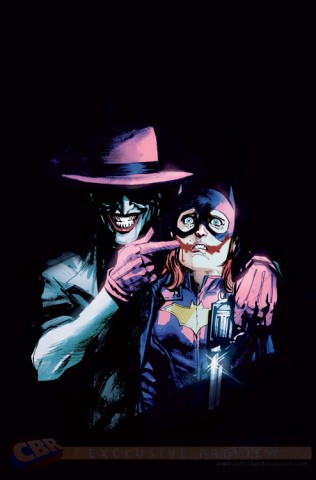
 (Warning: discussion of fictional sexual violence ahead.)
(Warning: discussion of fictional sexual violence ahead.)